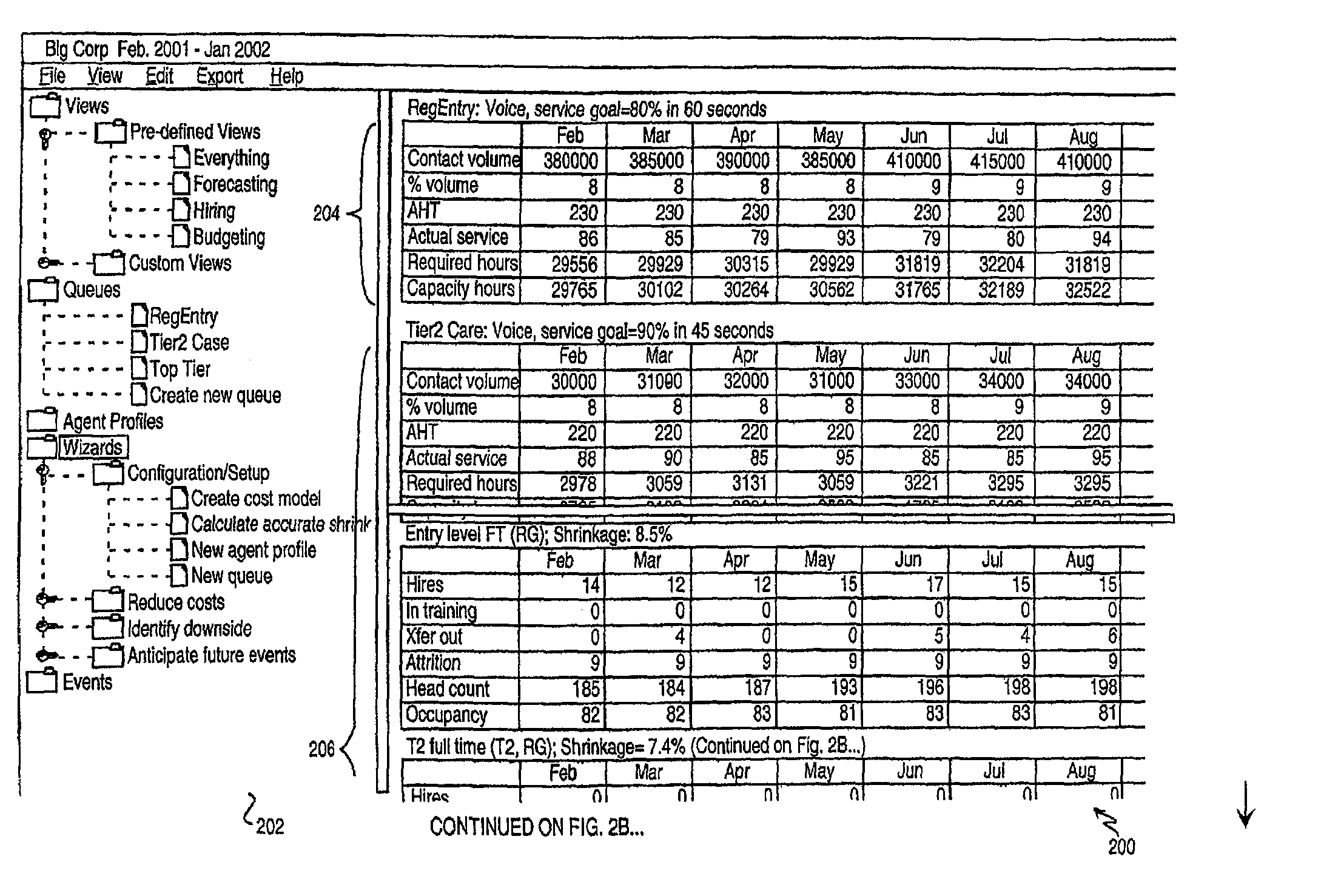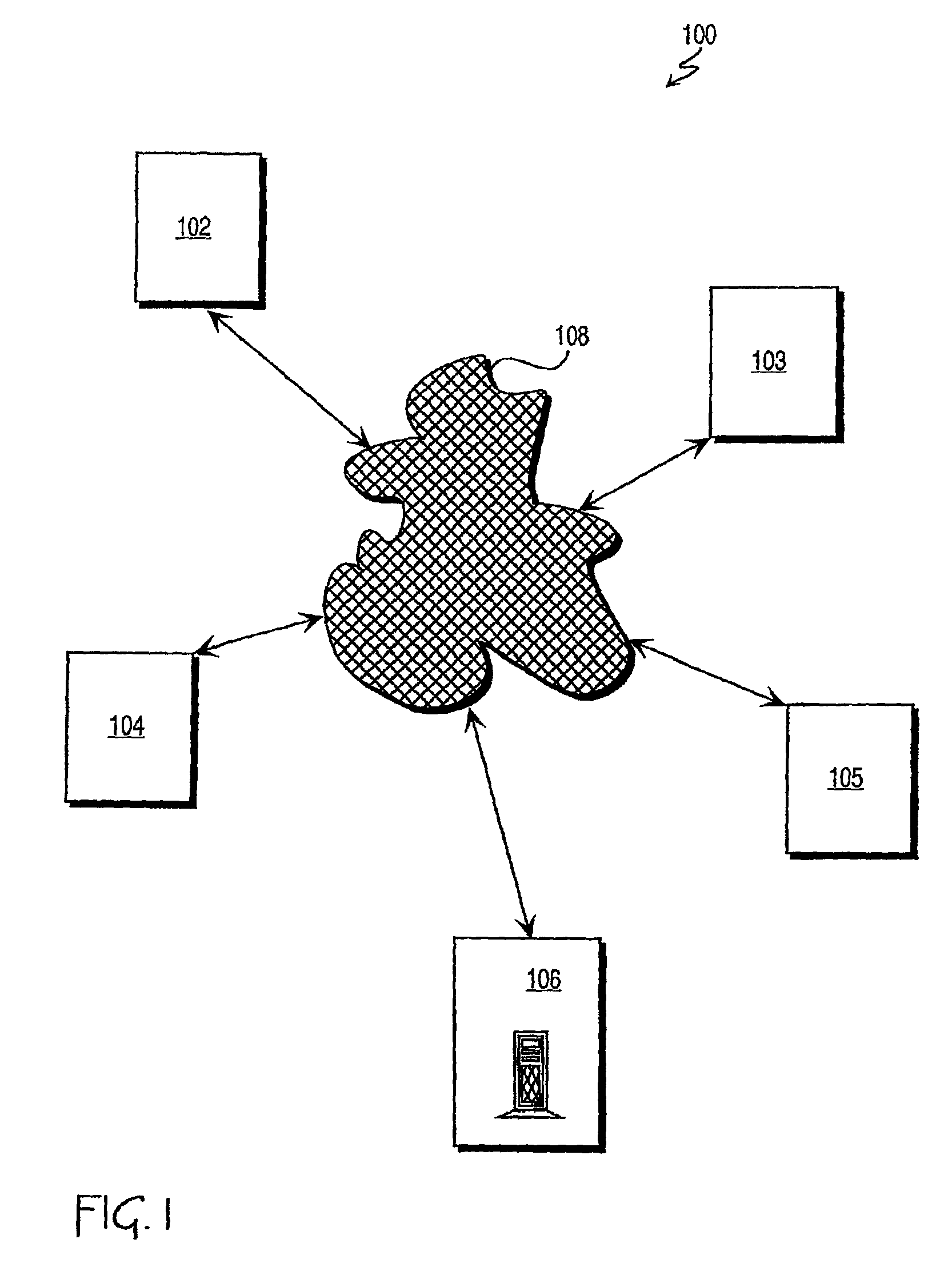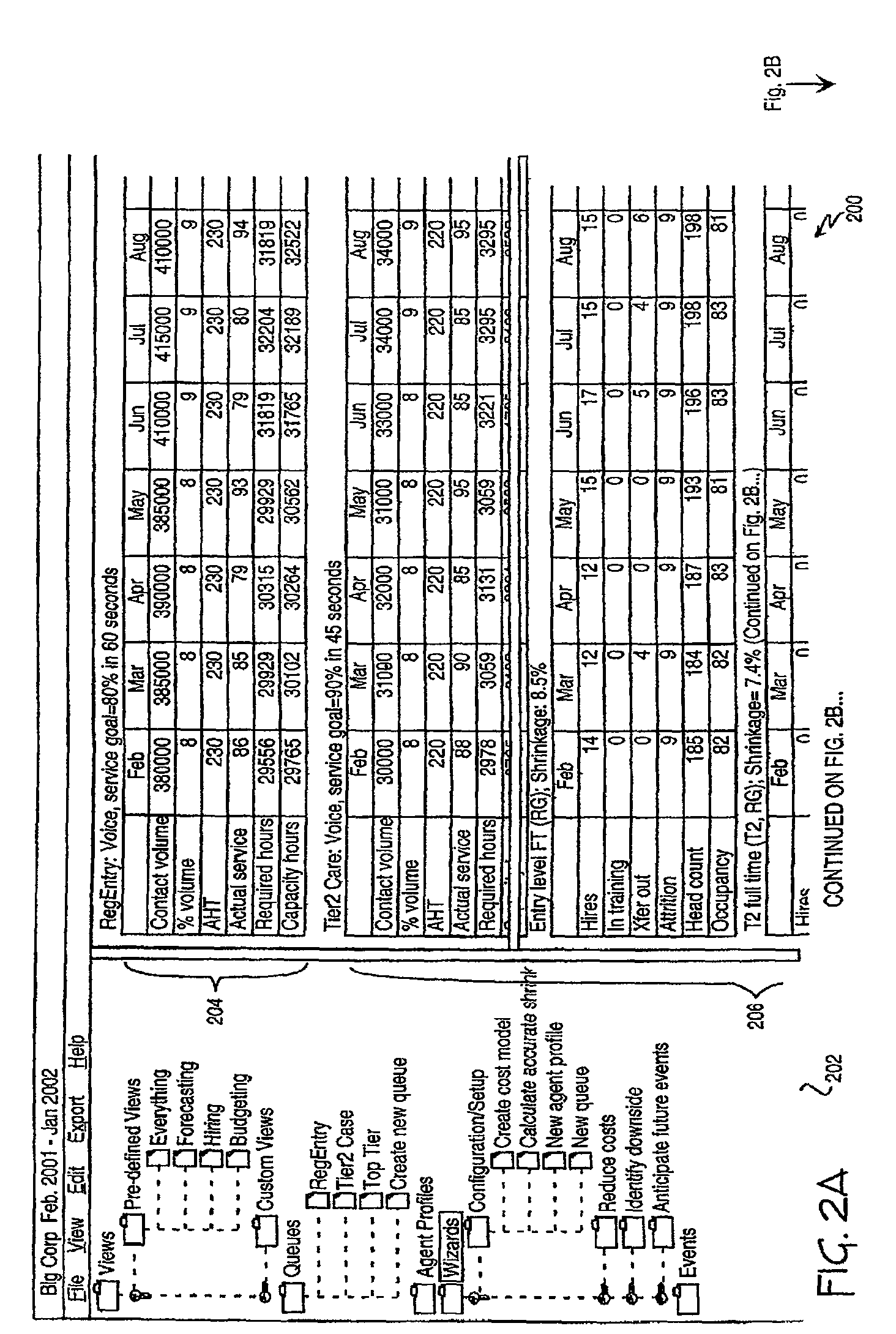Methods for long-range contact center staff planning utilizing discrete event simulation
a technology of event simulation and contact center staff, applied in the field of long-range contact center staff planning utilizing discrete event simulation, can solve the problems of poor schedule, many unanswered calls, many unpaid agents idle, etc., and achieve the effect of effective cost per hour
- Summary
- Abstract
- Description
- Claims
- Application Information
AI Technical Summary
Benefits of technology
Problems solved by technology
Method used
Image
Examples
case 1
[0065] When PCA [queue] [interval]=0
FTE[queue][interval]=AgentSeconds[queue][interval] / (15*60) where AgentSeconds is the number of seconds spent on this ‘queue’ in this ‘interval.’
case 2
[0066] When PCA [queue] [interval]=100
FTE[queue][interval=reverseErlang(with service goal=99]+(AgentUnoccupiedSeconds[queue][interval] / 15*60)
where reverseErlang−the required agents is identified for the given contact volume, ART and Service goal is set as 99
AgentUnoccupiedSeconds is the number of idle seconds.
case 3
[0067] When 0
FTE[queue][interval]=reverseErlang (with service level=PCA[queue][interval])
The forecasted FTE hours per hour is calculated by taking the average of the forecasted FTE hours / 15 min intervals obtained from the simulator for that hour. The hourly forecasted FTE hours per each queue is then summed to get the total forecasted FTE hours per queue for that period.
[0068]In obtaining percentage occupancy per profile, the occupied seconds for each interval is obtained from the simulator. This is the total sum of the occupied seconds of all the employees scheduled in an interval. The occupied seconds per profile per period can then be calculated as follows:
[0069]totalOccupancy[profile]=∑i=Oi=N(Headcount[profile][i]*numberofcopiesofiperperiod*Occupancy[profile][i])totalOccupancy[profile]=∑i=Oi=N(Headcount[profile][i]*numberofcopiesofiperperiod)
where N=7*24*4 intervals for deferred queues and non-deferred queues without holidays
N=(7+n)*...
PUM
 Login to View More
Login to View More Abstract
Description
Claims
Application Information
 Login to View More
Login to View More - R&D
- Intellectual Property
- Life Sciences
- Materials
- Tech Scout
- Unparalleled Data Quality
- Higher Quality Content
- 60% Fewer Hallucinations
Browse by: Latest US Patents, China's latest patents, Technical Efficacy Thesaurus, Application Domain, Technology Topic, Popular Technical Reports.
© 2025 PatSnap. All rights reserved.Legal|Privacy policy|Modern Slavery Act Transparency Statement|Sitemap|About US| Contact US: help@patsnap.com



